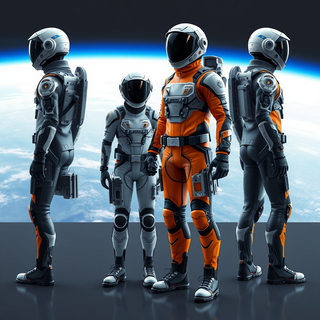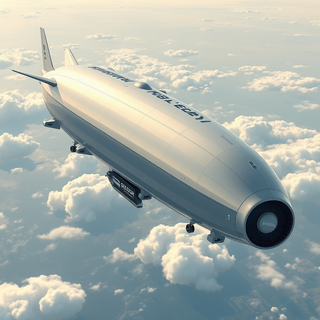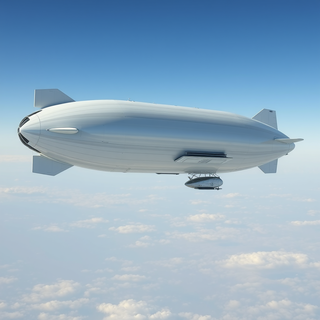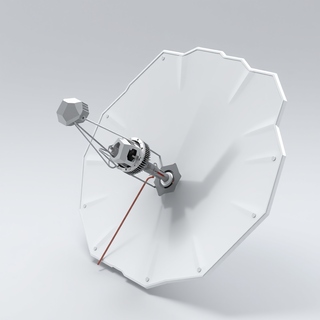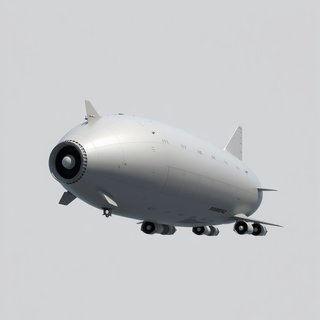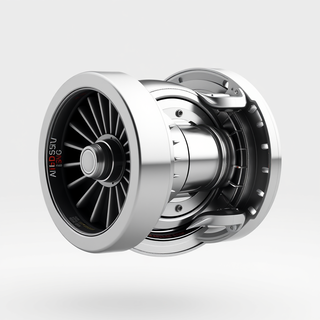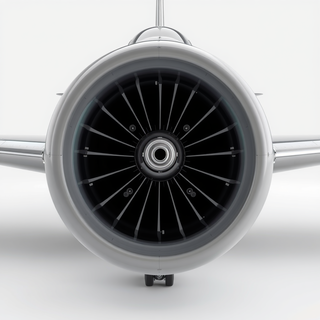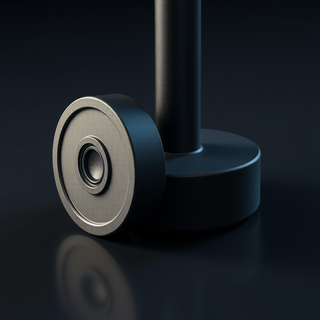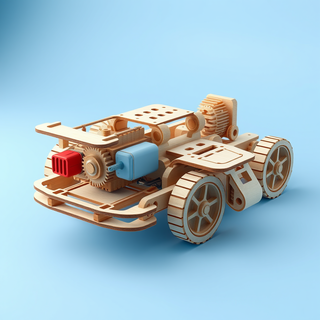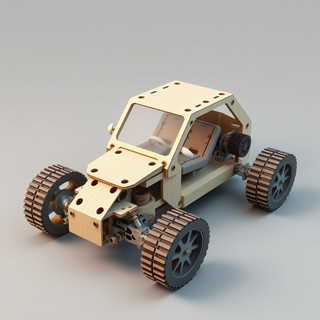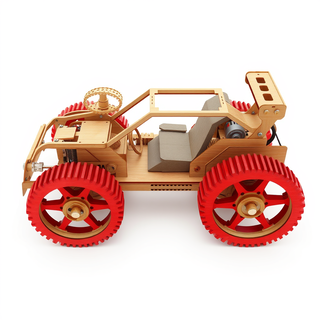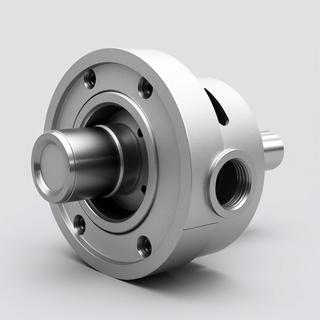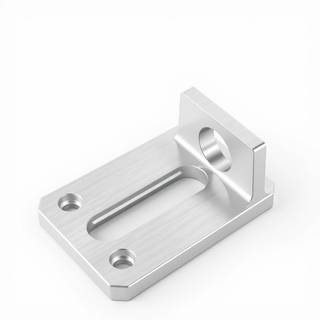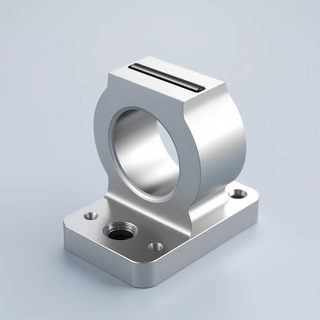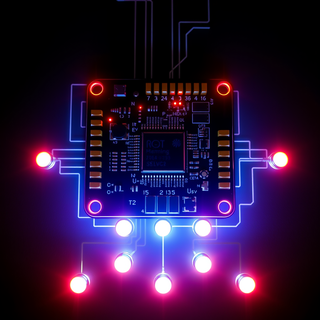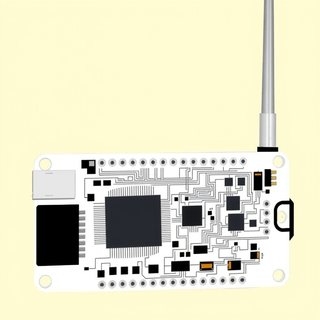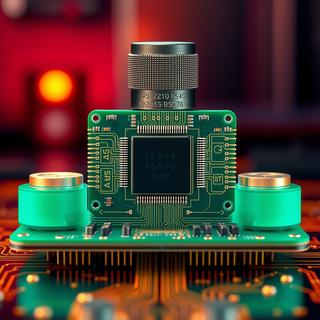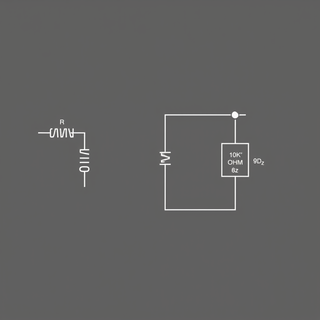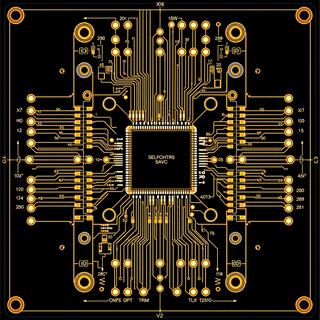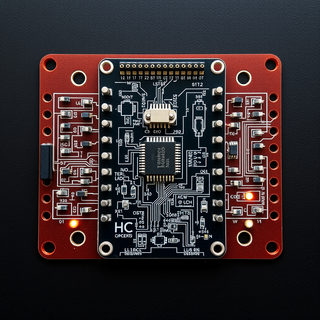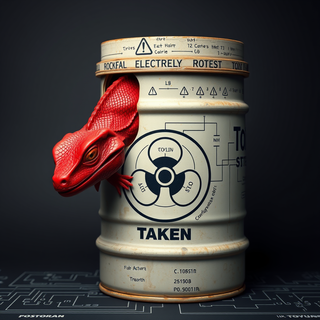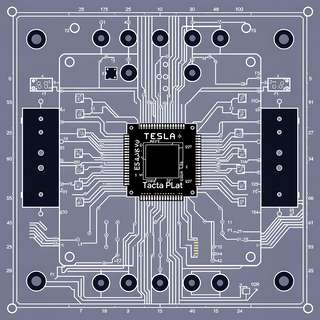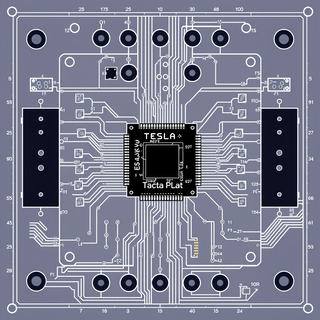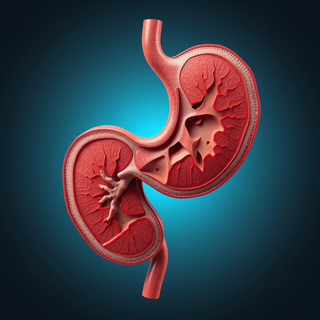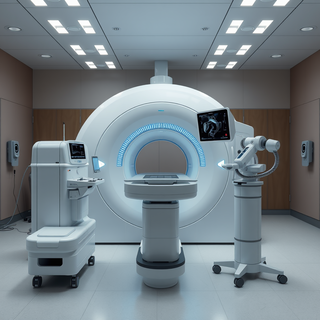Giuseppe Orlando
@giuseppeorlando-1 Tasks: 191
🛠️ 55 tools
🙏 1,344 karma
Innovator
Joined: September 2024
Follow
Giuseppe Orlando's tools
-
182551Released 11mo ago100% Free
-
 Open142Released 11mo ago100% Free
Open142Released 11mo ago100% Free
-
1977Released 11mo ago100% Free
-
91414Released 11mo ago100% Free
-
641117Released 11mo ago100% Free
-
 Assess global threats to human survival.Open2015Released 11mo ago100% Free# Analysis of Hypothetical Global Nuclear Conflict Scenario (2097) ## Impact Assessment ### Regions Destroyed - Most of Africa - Most of Asia - South America ### Regions Relatively Untouched - Most of Europe - Most of North America - Namibia (Africa) - Mongolia, Indonesia, Lebanon, Iran, Palestine/Israel (Asia) ## Estimated Casualties - **Total global population (2097 projection)**: ~11 billion - **Estimated casualties**: 7-8 billion (65-75% of global population) ## Environmental Consequences - **Nuclear winter** lasting 1-2 decades - **Global crop failures** for 3-5 years - **Widespread radioactive contamination** of soil and water - **Mass extinctions** of plant and animal species ## Socioeconomic Impact - **Collapse of global economy** and trade networks - **Breakdown of governmental structures** in most affected regions - **Mass refugee crises** in surviving areas ## Odds of Human Survival Given the scale of destruction, environmental damage, and societal collapse, humanity's odds of long-term survival are estimated at: **30-40% chance of avoiding extinction** ### Key Factors: 1. Survival of some industrial/agricultural capacity in Europe and North America 2. Preservation of knowledge and expertise in surviving regions 3. Ability to adapt to radically altered climate and environment ### Primary Extinction Risks: 1. Prolonged nuclear winter leading to global famine 2. Collapse of complex supply chains needed for medicine and technology 3. Conflicts over remaining resources among survivors ## Comparison to Other Extinction Risks | Risk Factor | Estimated Extinction Probability (100 years) | |-------------|----------------------------------------------| | Nuclear War (as described) | 60-70% | | Climate Change | 1-5% | | Pandemic | 0.1-1% | | Asteroid Impact | <0.000001% | **Conclusion**: This hypothetical nuclear conflict scenario represents an existential threat to humanity far exceeding other known risks. Preventing such conflicts and maintaining global stability should be considered paramount for ensuring human survival.
Assess global threats to human survival.Open2015Released 11mo ago100% Free# Analysis of Hypothetical Global Nuclear Conflict Scenario (2097) ## Impact Assessment ### Regions Destroyed - Most of Africa - Most of Asia - South America ### Regions Relatively Untouched - Most of Europe - Most of North America - Namibia (Africa) - Mongolia, Indonesia, Lebanon, Iran, Palestine/Israel (Asia) ## Estimated Casualties - **Total global population (2097 projection)**: ~11 billion - **Estimated casualties**: 7-8 billion (65-75% of global population) ## Environmental Consequences - **Nuclear winter** lasting 1-2 decades - **Global crop failures** for 3-5 years - **Widespread radioactive contamination** of soil and water - **Mass extinctions** of plant and animal species ## Socioeconomic Impact - **Collapse of global economy** and trade networks - **Breakdown of governmental structures** in most affected regions - **Mass refugee crises** in surviving areas ## Odds of Human Survival Given the scale of destruction, environmental damage, and societal collapse, humanity's odds of long-term survival are estimated at: **30-40% chance of avoiding extinction** ### Key Factors: 1. Survival of some industrial/agricultural capacity in Europe and North America 2. Preservation of knowledge and expertise in surviving regions 3. Ability to adapt to radically altered climate and environment ### Primary Extinction Risks: 1. Prolonged nuclear winter leading to global famine 2. Collapse of complex supply chains needed for medicine and technology 3. Conflicts over remaining resources among survivors ## Comparison to Other Extinction Risks | Risk Factor | Estimated Extinction Probability (100 years) | |-------------|----------------------------------------------| | Nuclear War (as described) | 60-70% | | Climate Change | 1-5% | | Pandemic | 0.1-1% | | Asteroid Impact | <0.000001% | **Conclusion**: This hypothetical nuclear conflict scenario represents an existential threat to humanity far exceeding other known risks. Preventing such conflicts and maintaining global stability should be considered paramount for ensuring human survival. -
 Explore faster-than-light travel with AI physics.Open391510Released 11mo ago100% FreeThe fundamental laws of physics, as defined by Einstein's theory of relativity, state that nothing can travel faster than the speed of light in a vacuum, which is approximately 299,792 kilometers per second. This limit arises because as an object approaches light speed, its mass effectively becomes infinite, requiring an infinite amount of energy for further acceleration. Three theoretical models for faster-than-light travel: 1. **Alcubierre Drive** - Principle: Contracting space-time in front of a ship and expanding it behind - Potential application: Interstellar travel - Key obstacle: Requires exotic matter with negative energy density 2. **Traversable Wormholes** - Principle: Creating shortcuts through space-time - Potential application: Near-instantaneous travel between distant points - Key obstacle: Immense energy requirements to create and stabilize 3. **Quantum Tunneling Drive** - Principle: Leveraging quantum tunneling effects at macroscopic scales - Potential application: "Teleportation" across space - Key obstacle: Scaling up quantum effects to work on large objects These models, if realized, could revolutionize space exploration by allowing rapid travel to distant star systems and galaxies. They may also lead to profound new insights about the nature of space, time, and the structure of the universe.
Explore faster-than-light travel with AI physics.Open391510Released 11mo ago100% FreeThe fundamental laws of physics, as defined by Einstein's theory of relativity, state that nothing can travel faster than the speed of light in a vacuum, which is approximately 299,792 kilometers per second. This limit arises because as an object approaches light speed, its mass effectively becomes infinite, requiring an infinite amount of energy for further acceleration. Three theoretical models for faster-than-light travel: 1. **Alcubierre Drive** - Principle: Contracting space-time in front of a ship and expanding it behind - Potential application: Interstellar travel - Key obstacle: Requires exotic matter with negative energy density 2. **Traversable Wormholes** - Principle: Creating shortcuts through space-time - Potential application: Near-instantaneous travel between distant points - Key obstacle: Immense energy requirements to create and stabilize 3. **Quantum Tunneling Drive** - Principle: Leveraging quantum tunneling effects at macroscopic scales - Potential application: "Teleportation" across space - Key obstacle: Scaling up quantum effects to work on large objects These models, if realized, could revolutionize space exploration by allowing rapid travel to distant star systems and galaxies. They may also lead to profound new insights about the nature of space, time, and the structure of the universe. -
 AI-powered aircraft design for optimal space and performance.Open781721Released 11mo ago100% Free## Reviving the X-30: A Next-Generation Hypersonic Spaceplane for the Future of Air Travel and Space Exploration ### Introduction The X-30, a revolutionary Mach 25 spaceplane proposed in the 1980s, was a visionary concept aimed at transforming commercial air travel and space exploration. Although the project was canceled due to its ambitious scope, advancements in technology over the past few decades have made it possible to revisit and enhance this design. This concept, dubbed X-30 Nova, seeks to revive and expand upon the original idea, leveraging cutting-edge materials, advanced propulsion systems, and innovative design principles to create a hypersonic spaceplane that can efficiently replace the Space Shuttle and pave the way for a new era in air travel and space exploration. ### Design Overview The X-30 Nova is a multi-layered, dimensional spaceplane design that integrates a range of advanced technologies to optimize space usage, aerodynamics, and functionality. The aircraft's sleek, aerodynamic shape is crafted from lightweight, high-strength materials such as carbon fiber reinforced polymers (CFRP) and titanium alloys. #### **Main Components:** * **Cockpit and Flight Deck:** The cockpit features an advanced, ergonomically designed flight deck with a 360-degree panoramic view, providing pilots with enhanced situational awareness. The flight deck is equipped with state-of-the-art avionics, including touchscreens, heads-up displays, and advanced navigation systems. * **Cabin and Passenger Area:** The spacious cabin is divided into three main sections: a forward passenger compartment, a mid-cabin storage area, and an aft section dedicated to cargo and utility storage. The cabin is pressurized to accommodate passengers comfortably during subsonic and supersonic flight phases. * **Propulsion System:** The X-30 Nova is powered by a hybrid propulsion system, combining a high-efficiency, low-emission gas turbine engine for subsonic flight with a scramjet engine for hypersonic operation. The scramjet engine, fueled by a combination of hydrogen and advanced, high-energy-density fuels, enables the spaceplane to achieve speeds of up to Mach 25. * **Thermal Protection System (TPS):** The TPS consists of a multi-layered, ceramic-based system that protects the spaceplane from extreme temperatures during hypersonic flight. This system features advanced materials with high thermal resistance, low weight, and excellent durability. ### Multi-Layered Dimensional Design The X-30 Nova incorporates a multi-layered, dimensional design that enables efficient use of space while maintaining structural integrity and aerodynamic performance. The design features: * **Inner Hull:** A lightweight, pressurized inner hull that provides a comfortable environment for passengers and crew. * **Outer Hull:** A durable, aerodynamic outer hull that withstands the stresses of hypersonic flight. * **Interlayer:** A thin, insulating interlayer that separates the inner and outer hulls, providing thermal protection and reducing noise transmission. ### Performance and Safety Features The X-30 Nova boasts an impressive array of performance and safety features, including: * **Advanced Flight Control System:** A sophisticated fly-by-wire system that provides precise control and stability throughout the flight envelope. * **Emergency Oxygen System:** A redundant oxygen system that ensures a reliable supply of breathable air in emergency situations. * **Advanced Avionics:** A suite of advanced avionics that provides real-time monitoring and control of critical systems. ### Sustainability and Environmental Impact The X-30 Nova is designed with sustainability and environmental responsibility in mind: * **Low-Emission Propulsion:** The hybrid propulsion system minimizes emissions and reduces environmental impact. * **Recyclable Materials:** The use of recyclable materials and sustainable production methods minimizes waste and reduces the spaceplane's carbon footprint. ### Comparison to the Original X-30 and Artemis Programs The X-30 Nova represents a significant advancement over the original X-30 concept, incorporating cutting-edge technologies and design principles to create a more efficient, sustainable, and capable spaceplane. Compared to the Artemis program's focus on lunar exploration, the X-30 Nova prioritizes the development of a reusable, hypersonic spaceplane for commercial air travel and space exploration. ### Technical Specifications * **Length:** 85 meters (278.9 feet) * **Wingspan:** 25 meters (82 feet) * **Height:** 12 meters (39.4 feet) * **Empty Weight:** 55,000 kg (121,254 lbs) * **Maximum Takeoff Weight:** 250,000 kg (551,155 lbs) * **Cruise Speed:** Mach 25 (30,000 km/h or 18,641 mph) * **Range:** 18,000 km (11,185 miles) ### Conclusion The X-30 Nova is a revolutionary hypersonic spaceplane design that leverages advanced technologies to create a sustainable, efficient, and capable vehicle for commercial air travel and space exploration. By reviving and enhancing the original X-30 concept, this design offers a promising solution for replacing the Space Shuttle and realizing President Reagan's vision of a "new Orient Express" for the 21st century.
AI-powered aircraft design for optimal space and performance.Open781721Released 11mo ago100% Free## Reviving the X-30: A Next-Generation Hypersonic Spaceplane for the Future of Air Travel and Space Exploration ### Introduction The X-30, a revolutionary Mach 25 spaceplane proposed in the 1980s, was a visionary concept aimed at transforming commercial air travel and space exploration. Although the project was canceled due to its ambitious scope, advancements in technology over the past few decades have made it possible to revisit and enhance this design. This concept, dubbed X-30 Nova, seeks to revive and expand upon the original idea, leveraging cutting-edge materials, advanced propulsion systems, and innovative design principles to create a hypersonic spaceplane that can efficiently replace the Space Shuttle and pave the way for a new era in air travel and space exploration. ### Design Overview The X-30 Nova is a multi-layered, dimensional spaceplane design that integrates a range of advanced technologies to optimize space usage, aerodynamics, and functionality. The aircraft's sleek, aerodynamic shape is crafted from lightweight, high-strength materials such as carbon fiber reinforced polymers (CFRP) and titanium alloys. #### **Main Components:** * **Cockpit and Flight Deck:** The cockpit features an advanced, ergonomically designed flight deck with a 360-degree panoramic view, providing pilots with enhanced situational awareness. The flight deck is equipped with state-of-the-art avionics, including touchscreens, heads-up displays, and advanced navigation systems. * **Cabin and Passenger Area:** The spacious cabin is divided into three main sections: a forward passenger compartment, a mid-cabin storage area, and an aft section dedicated to cargo and utility storage. The cabin is pressurized to accommodate passengers comfortably during subsonic and supersonic flight phases. * **Propulsion System:** The X-30 Nova is powered by a hybrid propulsion system, combining a high-efficiency, low-emission gas turbine engine for subsonic flight with a scramjet engine for hypersonic operation. The scramjet engine, fueled by a combination of hydrogen and advanced, high-energy-density fuels, enables the spaceplane to achieve speeds of up to Mach 25. * **Thermal Protection System (TPS):** The TPS consists of a multi-layered, ceramic-based system that protects the spaceplane from extreme temperatures during hypersonic flight. This system features advanced materials with high thermal resistance, low weight, and excellent durability. ### Multi-Layered Dimensional Design The X-30 Nova incorporates a multi-layered, dimensional design that enables efficient use of space while maintaining structural integrity and aerodynamic performance. The design features: * **Inner Hull:** A lightweight, pressurized inner hull that provides a comfortable environment for passengers and crew. * **Outer Hull:** A durable, aerodynamic outer hull that withstands the stresses of hypersonic flight. * **Interlayer:** A thin, insulating interlayer that separates the inner and outer hulls, providing thermal protection and reducing noise transmission. ### Performance and Safety Features The X-30 Nova boasts an impressive array of performance and safety features, including: * **Advanced Flight Control System:** A sophisticated fly-by-wire system that provides precise control and stability throughout the flight envelope. * **Emergency Oxygen System:** A redundant oxygen system that ensures a reliable supply of breathable air in emergency situations. * **Advanced Avionics:** A suite of advanced avionics that provides real-time monitoring and control of critical systems. ### Sustainability and Environmental Impact The X-30 Nova is designed with sustainability and environmental responsibility in mind: * **Low-Emission Propulsion:** The hybrid propulsion system minimizes emissions and reduces environmental impact. * **Recyclable Materials:** The use of recyclable materials and sustainable production methods minimizes waste and reduces the spaceplane's carbon footprint. ### Comparison to the Original X-30 and Artemis Programs The X-30 Nova represents a significant advancement over the original X-30 concept, incorporating cutting-edge technologies and design principles to create a more efficient, sustainable, and capable spaceplane. Compared to the Artemis program's focus on lunar exploration, the X-30 Nova prioritizes the development of a reusable, hypersonic spaceplane for commercial air travel and space exploration. ### Technical Specifications * **Length:** 85 meters (278.9 feet) * **Wingspan:** 25 meters (82 feet) * **Height:** 12 meters (39.4 feet) * **Empty Weight:** 55,000 kg (121,254 lbs) * **Maximum Takeoff Weight:** 250,000 kg (551,155 lbs) * **Cruise Speed:** Mach 25 (30,000 km/h or 18,641 mph) * **Range:** 18,000 km (11,185 miles) ### Conclusion The X-30 Nova is a revolutionary hypersonic spaceplane design that leverages advanced technologies to create a sustainable, efficient, and capable vehicle for commercial air travel and space exploration. By reviving and enhancing the original X-30 concept, this design offers a promising solution for replacing the Space Shuttle and realizing President Reagan's vision of a "new Orient Express" for the 21st century. -
546Released 11mo ago100% Free**Revenue Revival and Customer Engagement Strategies** To address declining sales and boost revenue, I recommend the following strategies: ### 1. **Customer Retention and Reactivation** * Implement a loyalty program to incentivize repeat business and encourage customer loyalty. * Re-engage with inactive customers through targeted email campaigns, personalized offers, and win-back strategies. * Conduct customer satisfaction surveys to identify areas for improvement and optimize the customer experience. ### 2. **Product/Service Optimization** * Analyze sales data to identify top-performing products/services and optimize their marketing, pricing, and distribution. * Conduct competitor analysis to identify gaps in the market and opportunities for differentiation. * Consider product/service innovation, bundling, or diversification to attract new customers and increase average order value. ### 3. **Digital Marketing Revamp** * Review and optimize the company's digital marketing strategy, including SEO, social media, email marketing, and paid advertising. * Leverage data analytics to target high-value customer segments and personalize marketing messages. * Invest in influencer marketing, content marketing, and user-generated content campaigns to increase brand awareness and engagement. ### 4. **Operational Efficiency** * Streamline business processes to reduce costs, improve productivity, and enhance the customer experience. * Implement efficient supply chain management, inventory optimization, and logistics strategies. * Adopt automation and technology to reduce manual errors, improve accuracy, and increase scalability. ### 5. **Employee Engagement and Enablement** * Foster a culture of innovation, empowerment, and accountability within the organization. * Provide ongoing training, development, and incentives to motivate employees and improve their sales and customer service skills. * Encourage collaboration, idea generation, and knowledge sharing across departments to drive innovation and growth. **Exploring New Markets** To identify potential new markets for expansion, consider the following: ### 1. **Market Analysis** * Conduct market research to identify emerging trends, customer needs, and competitor activity. * Analyze demographic data, consumer behavior, and industry reports to identify new market opportunities. ### 2. **Geographic Expansion** * Explore expansion into new geographic regions, including international markets, to tap into growing consumer demand. * Assess the feasibility of establishing new distribution channels, partnerships, or joint ventures to enter new markets. ### 3. **Diversification** * Identify adjacent markets or industries that align with the company's core competencies and values. * Explore opportunities for diversification through strategic acquisitions, partnerships, or innovation incubators. **Innovative Approaches** To drive growth and innovation, consider the following: ### 1. **Digital Transformation** * Invest in digital technologies, such as AI, blockchain, and IoT, to enhance customer experience, improve operational efficiency, and create new revenue streams. ### 2. **Sustainable and Socially Responsible Practices** * Embed sustainability and social responsibility into the company's DNA to appeal to the growing demand for eco-friendly and socially conscious products and services. ### 3. **Partnerships and Collaborations** * Form strategic partnerships with startups, academia, and industry peers to drive innovation, share knowledge, and access new markets. By implementing these strategies, your company can revitalize revenue growth, improve customer engagement, and explore new market opportunities for expansion. Remember to regularly review and adjust these strategies based on performance data, customer feedback, and market trends to ensure continued success.
-
 Open3846Released 11mo ago100% FreeThank you for providing details about your cross-border trade dispute. This is a complex issue that involves international commercial law. Here are some key points to consider: 1. **Applicable Law**: The first step is to determine which country's laws apply to your contract. This is typically specified in the contract itself through a "choice of law" clause. If not specified, courts will look at factors like where the contract was formed, where it was to be performed, etc. 2. **United Nations Convention on Contracts for the International Sale of Goods (CISG)**: This treaty provides a uniform international sales law and may apply to your dispute if both countries are signatories. The CISG governs contract formation, obligations of buyers and sellers, and remedies for breach. 3. **Dispute Resolution**: Check if your contract specifies a method for dispute resolution, such as arbitration or litigation in a particular jurisdiction. International arbitration is often preferred for cross-border disputes. 4. **Remedies**: Depending on the nature of the breach, potential remedies may include: - Specific performance (forcing the supplier to fulfill the contract) - Damages (monetary compensation) - Termination of the contract 5. **Enforcement**: If you obtain a judgment or arbitration award in your favor, you may need to enforce it in the supplier's country. The New York Convention facilitates enforcement of foreign arbitral awards in signatory countries. 6. **Trade Sanctions**: Ensure that any legal action doesn't violate international trade sanctions or export control regulations. To move forward, I recommend: 1. Thoroughly reviewing your contract for relevant clauses on applicable law, dispute resolution, and remedies. 2. Gathering all documentation related to the contract and the breach. 3. Considering alternative dispute resolution methods like mediation before pursuing litigation. 4. Consulting with a lawyer in your jurisdiction who specializes in international trade law for personalized advice. Remember, international disputes can be complex and time-consuming. Carefully weigh the potential costs and benefits of legal action against the possibility of negotiating a settlement directly with the supplier.
Open3846Released 11mo ago100% FreeThank you for providing details about your cross-border trade dispute. This is a complex issue that involves international commercial law. Here are some key points to consider: 1. **Applicable Law**: The first step is to determine which country's laws apply to your contract. This is typically specified in the contract itself through a "choice of law" clause. If not specified, courts will look at factors like where the contract was formed, where it was to be performed, etc. 2. **United Nations Convention on Contracts for the International Sale of Goods (CISG)**: This treaty provides a uniform international sales law and may apply to your dispute if both countries are signatories. The CISG governs contract formation, obligations of buyers and sellers, and remedies for breach. 3. **Dispute Resolution**: Check if your contract specifies a method for dispute resolution, such as arbitration or litigation in a particular jurisdiction. International arbitration is often preferred for cross-border disputes. 4. **Remedies**: Depending on the nature of the breach, potential remedies may include: - Specific performance (forcing the supplier to fulfill the contract) - Damages (monetary compensation) - Termination of the contract 5. **Enforcement**: If you obtain a judgment or arbitration award in your favor, you may need to enforce it in the supplier's country. The New York Convention facilitates enforcement of foreign arbitral awards in signatory countries. 6. **Trade Sanctions**: Ensure that any legal action doesn't violate international trade sanctions or export control regulations. To move forward, I recommend: 1. Thoroughly reviewing your contract for relevant clauses on applicable law, dispute resolution, and remedies. 2. Gathering all documentation related to the contract and the breach. 3. Considering alternative dispute resolution methods like mediation before pursuing litigation. 4. Consulting with a lawyer in your jurisdiction who specializes in international trade law for personalized advice. Remember, international disputes can be complex and time-consuming. Carefully weigh the potential costs and benefits of legal action against the possibility of negotiating a settlement directly with the supplier. -
 Open891321Released 11mo ago100% Free### Picture Editing App Recommendations I understand you're looking for picture editing apps! There are many great options, but I'd like to know a bit more about what you're looking for. Do you want to: * Edit personal photos for social media? * Create professional-level edits for a business or project? * Remove backgrounds, resize, or crop images? * Add filters, effects, or text to your photos? Please let me know, and I'll provide you with a tailored list of picture editing apps that fit your needs. In the meantime, here are some popular picture editing apps that cater to a wide range of users: 1. **Adobe Lightroom** * A professional-grade editing app for photographers and designers. * Key features: Non-destructive editing, advanced color grading, and presets. * Why it stands out: Industry-standard tool with seamless integration with other Adobe apps. 2. **Canva** * A user-friendly, all-in-one design and editing platform. * Key features: Drag-and-drop interface, vast template library, and collaboration tools. * Why it stands out: Perfect for non-designers and those who want to create social media graphics, invitations, and more. 3. **PicsArt** * A feature-rich, AI-powered editing app with a wide range of tools and filters. * Key features: Advanced editing tools, AI-powered portrait mode, and a large community. * Why it stands out: Offers a wide range of features and effects, making it suitable for both beginners and pros. 4. **VSCO** * A popular, user-friendly app with a focus on film-inspired aesthetics. * Key features: Presets, advanced editing tools, and a built-in community. * Why it stands out: Its unique, nostalgia-driven look and feel, as well as its ease of use. Please let me know if any of these apps resonate with you, or if you'd like me to provide more recommendations based on your specific needs! ?
Open891321Released 11mo ago100% Free### Picture Editing App Recommendations I understand you're looking for picture editing apps! There are many great options, but I'd like to know a bit more about what you're looking for. Do you want to: * Edit personal photos for social media? * Create professional-level edits for a business or project? * Remove backgrounds, resize, or crop images? * Add filters, effects, or text to your photos? Please let me know, and I'll provide you with a tailored list of picture editing apps that fit your needs. In the meantime, here are some popular picture editing apps that cater to a wide range of users: 1. **Adobe Lightroom** * A professional-grade editing app for photographers and designers. * Key features: Non-destructive editing, advanced color grading, and presets. * Why it stands out: Industry-standard tool with seamless integration with other Adobe apps. 2. **Canva** * A user-friendly, all-in-one design and editing platform. * Key features: Drag-and-drop interface, vast template library, and collaboration tools. * Why it stands out: Perfect for non-designers and those who want to create social media graphics, invitations, and more. 3. **PicsArt** * A feature-rich, AI-powered editing app with a wide range of tools and filters. * Key features: Advanced editing tools, AI-powered portrait mode, and a large community. * Why it stands out: Offers a wide range of features and effects, making it suitable for both beginners and pros. 4. **VSCO** * A popular, user-friendly app with a focus on film-inspired aesthetics. * Key features: Presets, advanced editing tools, and a built-in community. * Why it stands out: Its unique, nostalgia-driven look and feel, as well as its ease of use. Please let me know if any of these apps resonate with you, or if you'd like me to provide more recommendations based on your specific needs! ? -
 Open69512Released 11mo ago100% FreeSupervised and unsupervised learning are two fundamental approaches in machine learning: **Supervised Learning** - Uses labeled training data with known output values - Goal is to learn a function that maps inputs to correct outputs - Algorithm is "supervised" by being shown correct answers - Examples: classification, regression - Applications: spam detection, image recognition, speech recognition Key characteristics: - Requires labeled training data - Learns from known correct answers - Good for prediction tasks **Unsupervised Learning** - Uses unlabeled data without known output values - Goal is to find hidden patterns or structures in the data - Algorithm is not given correct answers, must find patterns on its own - Examples: clustering, dimensionality reduction, anomaly detection - Applications: customer segmentation, topic modeling, exploratory data analysis Key characteristics: - Does not require labeled data - Discovers patterns without guidance - Good for finding structure in data **Key Differences:** 1. Labeled vs unlabeled data 2. Presence vs absence of correct answers during training 3. Predictive vs descriptive modeling 4. Task-specific vs general pattern finding Supervised learning is typically used when we have a specific prediction task in mind, while unsupervised learning is useful for discovering unknown patterns and structures in data. Both approaches have important applications in AI and are often used in combination in real-world machine learning systems.
Open69512Released 11mo ago100% FreeSupervised and unsupervised learning are two fundamental approaches in machine learning: **Supervised Learning** - Uses labeled training data with known output values - Goal is to learn a function that maps inputs to correct outputs - Algorithm is "supervised" by being shown correct answers - Examples: classification, regression - Applications: spam detection, image recognition, speech recognition Key characteristics: - Requires labeled training data - Learns from known correct answers - Good for prediction tasks **Unsupervised Learning** - Uses unlabeled data without known output values - Goal is to find hidden patterns or structures in the data - Algorithm is not given correct answers, must find patterns on its own - Examples: clustering, dimensionality reduction, anomaly detection - Applications: customer segmentation, topic modeling, exploratory data analysis Key characteristics: - Does not require labeled data - Discovers patterns without guidance - Good for finding structure in data **Key Differences:** 1. Labeled vs unlabeled data 2. Presence vs absence of correct answers during training 3. Predictive vs descriptive modeling 4. Task-specific vs general pattern finding Supervised learning is typically used when we have a specific prediction task in mind, while unsupervised learning is useful for discovering unknown patterns and structures in data. Both approaches have important applications in AI and are often used in combination in real-world machine learning systems. -
 Open1431029Released 11mo ago100% Free### Command: `ip route` **Function:** The `ip route` command is used to configure static routes in a Cisco router's routing table. It allows you to manually specify the next hop or exit interface for packets destined for a particular network. **Syntax:** ``` ip route <destination_network> <subnet_mask> {<next-hop_IP> | <exit-interface>} [administrative-distance] [permanent] ``` **Usage:** - Used to create static routes when dynamic routing protocols are not in use or to override dynamic routes - Useful for small networks or for creating backup routes **Examples:** 1. Basic static route: ``` Router(config)# ip route 192.168.2.0 255.255.255.0 10.0.0.2 ``` This creates a route to the 192.168.2.0/24 network via the next-hop IP 10.0.0.2 2. Using an exit interface: ``` Router(config)# ip route 172.16.0.0 255.255.0.0 GigabitEthernet0/1 ``` This specifies that traffic to 172.16.0.0/16 should be sent out of the GigabitEthernet0/1 interface 3. With administrative distance: ``` Router(config)# ip route 10.0.0.0 255.0.0.0 192.168.1.1 150 ``` This sets a static route with an administrative distance of 150 (less preferred than most dynamic routes) **Best Practices:** - Use static routes sparingly in large networks to avoid manual maintenance - Always verify your static routes with `show ip route` after configuration - Consider using floating static routes (with higher administrative distance) as backup routes **Common Pitfalls:** - Forgetting to update static routes when network topology changes - Creating routing loops by improperly configured static routes - Overusing static routes in complex networks, leading to difficult troubleshooting
Open1431029Released 11mo ago100% Free### Command: `ip route` **Function:** The `ip route` command is used to configure static routes in a Cisco router's routing table. It allows you to manually specify the next hop or exit interface for packets destined for a particular network. **Syntax:** ``` ip route <destination_network> <subnet_mask> {<next-hop_IP> | <exit-interface>} [administrative-distance] [permanent] ``` **Usage:** - Used to create static routes when dynamic routing protocols are not in use or to override dynamic routes - Useful for small networks or for creating backup routes **Examples:** 1. Basic static route: ``` Router(config)# ip route 192.168.2.0 255.255.255.0 10.0.0.2 ``` This creates a route to the 192.168.2.0/24 network via the next-hop IP 10.0.0.2 2. Using an exit interface: ``` Router(config)# ip route 172.16.0.0 255.255.0.0 GigabitEthernet0/1 ``` This specifies that traffic to 172.16.0.0/16 should be sent out of the GigabitEthernet0/1 interface 3. With administrative distance: ``` Router(config)# ip route 10.0.0.0 255.0.0.0 192.168.1.1 150 ``` This sets a static route with an administrative distance of 150 (less preferred than most dynamic routes) **Best Practices:** - Use static routes sparingly in large networks to avoid manual maintenance - Always verify your static routes with `show ip route` after configuration - Consider using floating static routes (with higher administrative distance) as backup routes **Common Pitfalls:** - Forgetting to update static routes when network topology changes - Creating routing loops by improperly configured static routes - Overusing static routes in complex networks, leading to difficult troubleshooting -
 AI professor demystifies complex science concepts.Open57414Released 11mo ago100% Free**Exercise: Average Weight of Toucans in a Wildlife Refuge** A biologist is monitoring the average weight of a group of young toucans in a wildlife refuge. The following data has been recorded: | Age (months) (x) | Average Weight (kg) (y) | | --- | --- | | 0 | 0.8 | | 2 | 1.4 | | 4 | 2.0 | | 6 | 2.6 | **Task 1: Write the equation of the function in the form y = mx + b** To find the equation of the line that best fits the data, we can use the slope-intercept form, y = mx + b, where m is the slope and b is the y-intercept. First, let's calculate the slope (m) using two points from the table. We'll choose the points (0, 0.8) and (2, 1.4). m = (y2 - y1) / (x2 - x1) = (1.4 - 0.8) / (2 - 0) = 0.6 / 2 = 0.3 Now, we can use one of the points to find the y-intercept (b). Let's use the point (0, 0.8). y = mx + b 0.8 = 0.3(0) + b b = 0.8 So, the equation of the line is: y = 0.3x + 0.8 **Task 2: Use the equation to predict** **a) What will be the average weight of the toucans at 10 months?** To find the average weight at 10 months, we can plug x = 10 into the equation: y = 0.3(10) + 0.8 = 3.8 kg Therefore, the average weight of the toucans at 10 months is approximately 3.8 kg. **b) At what age will they have an average weight of 3 kg?** To find the age at which the average weight will be 3 kg, we can set y = 3 and solve for x: 3 = 0.3x + 0.8 Subtract 0.8 from both sides: 2.2 = 0.3x Divide both sides by 0.3: x = 2.2 / 0.3 = 7.33 months Therefore, the toucans will have an average weight of 3 kg at approximately 7.33 months. **Practical Application** This exercise demonstrates the importance of mathematical modeling in biology and ecology. By analyzing the relationship between the age and weight of toucans, wildlife experts can make informed decisions about feeding programs, habitat management, and conservation efforts. In real-world scenarios, understanding the growth patterns of species can help conservationists develop effective strategies to protect and preserve wildlife populations. I hope this explanation helps you understand the exercise! Let me know if you have any further questions.
AI professor demystifies complex science concepts.Open57414Released 11mo ago100% Free**Exercise: Average Weight of Toucans in a Wildlife Refuge** A biologist is monitoring the average weight of a group of young toucans in a wildlife refuge. The following data has been recorded: | Age (months) (x) | Average Weight (kg) (y) | | --- | --- | | 0 | 0.8 | | 2 | 1.4 | | 4 | 2.0 | | 6 | 2.6 | **Task 1: Write the equation of the function in the form y = mx + b** To find the equation of the line that best fits the data, we can use the slope-intercept form, y = mx + b, where m is the slope and b is the y-intercept. First, let's calculate the slope (m) using two points from the table. We'll choose the points (0, 0.8) and (2, 1.4). m = (y2 - y1) / (x2 - x1) = (1.4 - 0.8) / (2 - 0) = 0.6 / 2 = 0.3 Now, we can use one of the points to find the y-intercept (b). Let's use the point (0, 0.8). y = mx + b 0.8 = 0.3(0) + b b = 0.8 So, the equation of the line is: y = 0.3x + 0.8 **Task 2: Use the equation to predict** **a) What will be the average weight of the toucans at 10 months?** To find the average weight at 10 months, we can plug x = 10 into the equation: y = 0.3(10) + 0.8 = 3.8 kg Therefore, the average weight of the toucans at 10 months is approximately 3.8 kg. **b) At what age will they have an average weight of 3 kg?** To find the age at which the average weight will be 3 kg, we can set y = 3 and solve for x: 3 = 0.3x + 0.8 Subtract 0.8 from both sides: 2.2 = 0.3x Divide both sides by 0.3: x = 2.2 / 0.3 = 7.33 months Therefore, the toucans will have an average weight of 3 kg at approximately 7.33 months. **Practical Application** This exercise demonstrates the importance of mathematical modeling in biology and ecology. By analyzing the relationship between the age and weight of toucans, wildlife experts can make informed decisions about feeding programs, habitat management, and conservation efforts. In real-world scenarios, understanding the growth patterns of species can help conservationists develop effective strategies to protect and preserve wildlife populations. I hope this explanation helps you understand the exercise! Let me know if you have any further questions. -
961223Released 11mo ago100% Free## RFID Reader Project for Arduino Mega 2560 ### Objective Set up an RFID-RC522 module to read and display card/key IDs on the serial monitor. ### Components Needed - Arduino Mega 2560 - RFID-RC522 module - Jumper wires - RFID cards/keys ### Wiring Diagram Connect the RFID-RC522 to the Arduino Mega as follows: - SDA (SS) -> Digital Pin 53 - SCK -> Digital Pin 52 - MOSI -> Digital Pin 51 - MISO -> Digital Pin 50 - IRQ -> (not connected) - GND -> GND - RST -> Digital Pin 5 - 3.3V -> 3.3V ### Code ```cpp #include <SPI.h> #include <MFRC522.h> #define SS_PIN 53 #define RST_PIN 5 MFRC522 rfid(SS_PIN, RST_PIN); void setup() { Serial.begin(9600); SPI.begin(); rfid.PCD_Init(); Serial.println("Scan RFID Card"); } void loop() { if (!rfid.PICC_IsNewCardPresent() || !rfid.PICC_ReadCardSerial()) return; Serial.print("RFID Tag UID: "); for (byte i = 0; i < rfid.uid.size; i++) { Serial.print(rfid.uid.uidByte[i] < 0x10 ? " 0" : " "); Serial.print(rfid.uid.uidByte[i], HEX); } Serial.println(); rfid.PICC_HaltA(); rfid.PCD_StopCrypto1(); } ``` ### Instructions 1. Wire the RFID-RC522 to the Arduino Mega as shown in the wiring diagram. 2. Install the MFRC522 library in the Arduino IDE (Sketch > Include Library > Manage Libraries). 3. Copy and paste the provided code into a new Arduino sketch. 4. Upload the code to your Arduino Mega. 5. Open the Serial Monitor (Tools > Serial Monitor) and set the baud rate to 9600. 6. Swipe an RFID card or key near the RFID-RC522 module. 7. The card/key ID will be displayed in the Serial Monitor. ### Safety Precautions - Ensure proper connections to avoid short circuits. - Handle the RFID module carefully to prevent static discharge. ### Troubleshooting - If no output is seen, check wiring connections and ensure the correct pins are used. - Verify that the MFRC522 library is installed correctly. - Try moving the card/key closer to the RFID module if not detected. ### Additional Resources - [MFRC522 Library Documentation](https://github.com/miguelbalboa/rfid) - [Arduino Mega 2560 Pinout](https://store.arduino.cc/products/arduino-mega-2560-rev3)
-
 Master Arduino Mega with expert-guided projectsOpen82615Released 11mo ago100% Free# Rain Sensing Motorized Umbrella Bag Mount ## Project Description This project creates an automatic umbrella bag dispenser that detects rain and motorizes an umbrella bag mount. When rain is detected, it extends the mount to present an umbrella bag. Perfect for entryways to keep floors dry. ## Materials Needed - Arduino Mega 2560 - Rain sensor module - Servo motor - Jumper wires - Breadboard - Umbrella bag holder - Mounting hardware ## Wiring Diagram ``` Arduino Mega 2560 Rain Sensor Servo Motor 5V -------------------- VCC GND ------------------- GND ----------- GND Pin 2 ------------------ DO Pin 9 ---------------------------------- Signal ``` ## Arduino Code ```cpp #include <Servo.h> const int rainPin = 2; const int servoPin = 9; Servo bagServo; int rainState = 0; void setup() { pinMode(rainPin, INPUT); bagServo.attach(servoPin); bagServo.write(0); // Start in retracted position } void loop() { rainState = digitalRead(rainPin); if (rainState == LOW) { // Rain detected bagServo.write(90); // Extend bag mount delay(5000); // Keep extended for 5 seconds } else { bagServo.write(0); // Retract bag mount } delay(1000); // Check every second } ``` ## Assembly Steps 1. Connect the rain sensor to the Arduino as per the wiring diagram. 2. Attach the servo motor to the umbrella bag holder. 3. Connect the servo to the Arduino. 4. Mount the assembly near an entryway. 5. Upload the code to the Arduino. ## Troubleshooting - If the servo doesn't move, check wiring and power connections. - Adjust the rain sensor sensitivity if needed. - Ensure the servo has enough torque to move the bag holder. ## Possible Enhancements - Add an LCD display to show weather info - Incorporate a humidity sensor for more accurate detection - Use a stronger motor for larger bag holders - Add LED indicators for system status
Master Arduino Mega with expert-guided projectsOpen82615Released 11mo ago100% Free# Rain Sensing Motorized Umbrella Bag Mount ## Project Description This project creates an automatic umbrella bag dispenser that detects rain and motorizes an umbrella bag mount. When rain is detected, it extends the mount to present an umbrella bag. Perfect for entryways to keep floors dry. ## Materials Needed - Arduino Mega 2560 - Rain sensor module - Servo motor - Jumper wires - Breadboard - Umbrella bag holder - Mounting hardware ## Wiring Diagram ``` Arduino Mega 2560 Rain Sensor Servo Motor 5V -------------------- VCC GND ------------------- GND ----------- GND Pin 2 ------------------ DO Pin 9 ---------------------------------- Signal ``` ## Arduino Code ```cpp #include <Servo.h> const int rainPin = 2; const int servoPin = 9; Servo bagServo; int rainState = 0; void setup() { pinMode(rainPin, INPUT); bagServo.attach(servoPin); bagServo.write(0); // Start in retracted position } void loop() { rainState = digitalRead(rainPin); if (rainState == LOW) { // Rain detected bagServo.write(90); // Extend bag mount delay(5000); // Keep extended for 5 seconds } else { bagServo.write(0); // Retract bag mount } delay(1000); // Check every second } ``` ## Assembly Steps 1. Connect the rain sensor to the Arduino as per the wiring diagram. 2. Attach the servo motor to the umbrella bag holder. 3. Connect the servo to the Arduino. 4. Mount the assembly near an entryway. 5. Upload the code to the Arduino. ## Troubleshooting - If the servo doesn't move, check wiring and power connections. - Adjust the rain sensor sensitivity if needed. - Ensure the servo has enough torque to move the bag holder. ## Possible Enhancements - Add an LCD display to show weather info - Incorporate a humidity sensor for more accurate detection - Use a stronger motor for larger bag holders - Add LED indicators for system status -
 Design futuristic space warfare gear in 3DOpen4919Released 11mo ago100% Free
Design futuristic space warfare gear in 3DOpen4919Released 11mo ago100% Free -
1061724Released 11mo ago100% Free
-
1042529Released 11mo ago100% Free
-
 AI-powered aerospace design revolution in 3DOpen40110Released 11mo ago100% Free
AI-powered aerospace design revolution in 3DOpen40110Released 11mo ago100% Free -
53438157Released 11mo ago100% Free
-
 Your AI expert in orbital mechanics and space missionsOpen161Released 11mo ago100% Free# Orbital Mechanics and Kepler's Laws: A Comprehensive Guide ## Table of Contents 1. [Introduction](#introduction) 2. [Kepler's Laws of Planetary Motion](#keplers-laws) 3. [Orbital Types](#orbital-types) 4. [Orbital Parameters and Calculations](#orbital-parameters) 5. [Practical Applications](#applications) 6. [Case Studies](#case-studies) 7. [Glossary](#glossary) 8. [Key Equations](#equations) <a name="introduction"></a> ## 1. Introduction Orbital mechanics is the study of the motion of artificial satellites and space vehicles moving under the influence of forces such as gravity, atmospheric drag, thrust, etc. This guide will provide a comprehensive overview of key concepts in orbital mechanics, focusing on Kepler's laws and their applications to satellite motion. <a name="keplers-laws"></a> ## 2. Kepler's Laws of Planetary Motion Johannes Kepler formulated three laws that describe the motion of planets around the Sun. These laws also apply to satellites orbiting Earth or other celestial bodies. ### Kepler's First Law: The Law of Ellipses - All planets orbit the Sun in elliptical orbits, with the Sun at one focus of the ellipse. - For satellites, Earth (or another central body) is at one focus of the elliptical orbit. ### Kepler's Second Law: The Law of Equal Areas - A line segment joining a planet and the Sun sweeps out equal areas during equal intervals of time. - This law implies that planets move faster when they are closer to the Sun and slower when they are farther away. ### Kepler's Third Law: The Law of Periods - The square of the orbital period of a planet is directly proportional to the cube of the semi-major axis of its orbit. - Mathematically: T^2 ∝ a^3, where T is the orbital period and a is the semi-major axis. <a name="orbital-types"></a> ## 3. Orbital Types ### Geostationary Orbit (GEO) - Altitude: approximately 35,786 km above Earth's equator - Period: 24 hours (matches Earth's rotation) - Applications: communications satellites, weather satellites ### Low Earth Orbit (LEO) - Altitude: 160 km to 2,000 km - Period: about 88 to 127 minutes - Applications: Earth observation, spy satellites, human spaceflight ### Medium Earth Orbit (MEO) - Altitude: 2,000 km to just below GEO - Period: 2 to 24 hours - Applications: navigation satellites (e.g., GPS) ### Polar Orbit - Inclination: near 90 degrees - Passes over Earth's poles - Applications: Earth observation, weather monitoring ### Elliptical Orbit - Eccentricity > 0 - Varying altitude throughout orbit - Applications: communications, scientific missions <a name="orbital-parameters"></a> ## 4. Orbital Parameters and Calculations ### Key Orbital Elements 1. Semi-major axis (a) 2. Eccentricity (e) 3. Inclination (i) 4. Right ascension of the ascending node (Ω) 5. Argument of periapsis (ω) 6. True anomaly (ν) ### Calculating Orbital Period Using Kepler's Third Law: T = 2π √(a^3 / μ) Where: - T is the orbital period - a is the semi-major axis - μ is the standard gravitational parameter (GM) ### Calculating Orbital Velocity v = √(μ * (2/r - 1/a)) Where: - v is the orbital velocity - r is the distance from the center of the central body - a is the semi-major axis <a name="applications"></a> ## 5. Practical Applications 1. Satellite deployment and orbit insertion 2. Trajectory analysis and optimization 3. Mission planning and orbital maneuvers 4. Rendezvous and docking operations 5. Interplanetary trajectory design <a name="case-studies"></a> ## 6. Case Studies ### Case Study 1: GPS Satellite Constellation - Orbit type: MEO - Altitude: approximately 20,200 km - Inclination: 55 degrees - Number of satellites: 24 (minimum for global coverage) - Orbital period: approximately 12 hours ### Case Study 2: International Space Station (ISS) - Orbit type: LEO - Altitude: approximately 400 km - Inclination: 51.6 degrees - Orbital period: about 92 minutes - Challenges: atmospheric drag, regular reboosts required <a name="glossary"></a> ## 7. Glossary - **Apogee**: The point in an orbit farthest from the central body - **Perigee**: The point in an orbit closest to the central body - **Eccentricity**: A measure of how much an orbit deviates from a perfect circle - **Inclination**: The angle between the orbital plane and the equatorial plane of the central body - **Delta-v**: The change in velocity required for an orbital maneuver <a name="equations"></a> ## 8. Key Equations 1. Vis-viva equation: v^2 = μ * (2/r - 1/a) 2. Kepler's Third Law: T^2 = (4π^2 / μ) * a^3 3. Eccentricity: e = (ra - rp) / (ra + rp) Where ra is the apogee radius and rp is the perigee radius 4. Orbital energy: ε = -μ / (2a) 5. Angular momentum: h = r * v This guide provides a foundation for understanding orbital mechanics and Kepler's laws. For more advanced topics or specific applications, consult specialized textbooks or seek guidance from aerospace professionals.
Your AI expert in orbital mechanics and space missionsOpen161Released 11mo ago100% Free# Orbital Mechanics and Kepler's Laws: A Comprehensive Guide ## Table of Contents 1. [Introduction](#introduction) 2. [Kepler's Laws of Planetary Motion](#keplers-laws) 3. [Orbital Types](#orbital-types) 4. [Orbital Parameters and Calculations](#orbital-parameters) 5. [Practical Applications](#applications) 6. [Case Studies](#case-studies) 7. [Glossary](#glossary) 8. [Key Equations](#equations) <a name="introduction"></a> ## 1. Introduction Orbital mechanics is the study of the motion of artificial satellites and space vehicles moving under the influence of forces such as gravity, atmospheric drag, thrust, etc. This guide will provide a comprehensive overview of key concepts in orbital mechanics, focusing on Kepler's laws and their applications to satellite motion. <a name="keplers-laws"></a> ## 2. Kepler's Laws of Planetary Motion Johannes Kepler formulated three laws that describe the motion of planets around the Sun. These laws also apply to satellites orbiting Earth or other celestial bodies. ### Kepler's First Law: The Law of Ellipses - All planets orbit the Sun in elliptical orbits, with the Sun at one focus of the ellipse. - For satellites, Earth (or another central body) is at one focus of the elliptical orbit. ### Kepler's Second Law: The Law of Equal Areas - A line segment joining a planet and the Sun sweeps out equal areas during equal intervals of time. - This law implies that planets move faster when they are closer to the Sun and slower when they are farther away. ### Kepler's Third Law: The Law of Periods - The square of the orbital period of a planet is directly proportional to the cube of the semi-major axis of its orbit. - Mathematically: T^2 ∝ a^3, where T is the orbital period and a is the semi-major axis. <a name="orbital-types"></a> ## 3. Orbital Types ### Geostationary Orbit (GEO) - Altitude: approximately 35,786 km above Earth's equator - Period: 24 hours (matches Earth's rotation) - Applications: communications satellites, weather satellites ### Low Earth Orbit (LEO) - Altitude: 160 km to 2,000 km - Period: about 88 to 127 minutes - Applications: Earth observation, spy satellites, human spaceflight ### Medium Earth Orbit (MEO) - Altitude: 2,000 km to just below GEO - Period: 2 to 24 hours - Applications: navigation satellites (e.g., GPS) ### Polar Orbit - Inclination: near 90 degrees - Passes over Earth's poles - Applications: Earth observation, weather monitoring ### Elliptical Orbit - Eccentricity > 0 - Varying altitude throughout orbit - Applications: communications, scientific missions <a name="orbital-parameters"></a> ## 4. Orbital Parameters and Calculations ### Key Orbital Elements 1. Semi-major axis (a) 2. Eccentricity (e) 3. Inclination (i) 4. Right ascension of the ascending node (Ω) 5. Argument of periapsis (ω) 6. True anomaly (ν) ### Calculating Orbital Period Using Kepler's Third Law: T = 2π √(a^3 / μ) Where: - T is the orbital period - a is the semi-major axis - μ is the standard gravitational parameter (GM) ### Calculating Orbital Velocity v = √(μ * (2/r - 1/a)) Where: - v is the orbital velocity - r is the distance from the center of the central body - a is the semi-major axis <a name="applications"></a> ## 5. Practical Applications 1. Satellite deployment and orbit insertion 2. Trajectory analysis and optimization 3. Mission planning and orbital maneuvers 4. Rendezvous and docking operations 5. Interplanetary trajectory design <a name="case-studies"></a> ## 6. Case Studies ### Case Study 1: GPS Satellite Constellation - Orbit type: MEO - Altitude: approximately 20,200 km - Inclination: 55 degrees - Number of satellites: 24 (minimum for global coverage) - Orbital period: approximately 12 hours ### Case Study 2: International Space Station (ISS) - Orbit type: LEO - Altitude: approximately 400 km - Inclination: 51.6 degrees - Orbital period: about 92 minutes - Challenges: atmospheric drag, regular reboosts required <a name="glossary"></a> ## 7. Glossary - **Apogee**: The point in an orbit farthest from the central body - **Perigee**: The point in an orbit closest to the central body - **Eccentricity**: A measure of how much an orbit deviates from a perfect circle - **Inclination**: The angle between the orbital plane and the equatorial plane of the central body - **Delta-v**: The change in velocity required for an orbital maneuver <a name="equations"></a> ## 8. Key Equations 1. Vis-viva equation: v^2 = μ * (2/r - 1/a) 2. Kepler's Third Law: T^2 = (4π^2 / μ) * a^3 3. Eccentricity: e = (ra - rp) / (ra + rp) Where ra is the apogee radius and rp is the perigee radius 4. Orbital energy: ε = -μ / (2a) 5. Angular momentum: h = r * v This guide provides a foundation for understanding orbital mechanics and Kepler's laws. For more advanced topics or specific applications, consult specialized textbooks or seek guidance from aerospace professionals. -
 AI-powered satellite expertise at your fingertips.Open162Released 11mo ago100% Free# Earth Observation Satellite Design and Operation Guide ## Introduction Earth observation satellites play a crucial role in monitoring our planet's environment, weather, and natural resources. Designing and operating these satellites requires careful consideration of various systems to ensure reliable data collection and transmission while maintaining orbital stability. ## Main Components ### 1. Multi-spectral Imaging Sensor - Provides data in multiple wavelength bands - Requires precise calibration and temperature control ### 2. Solar Power System - Converts sunlight into electrical power - Includes solar panels, batteries, and power management unit ### 3. Communication Module - Enables data transmission to ground stations - Typically uses S-band or X-band frequencies ## Design Considerations ### Orbital Stability - Choose appropriate orbit (e.g., sun-synchronous) for consistent imaging conditions - Implement attitude control system (reaction wheels, magnetorquers) for precise pointing ### Data Transmission - Use high-gain directional antennas for improved signal strength - Implement error correction codes to ensure data integrity - Consider store-and-forward capability for periods without ground station visibility ### Power Management - Design solar arrays for optimal sun exposure throughout orbit - Implement power-saving modes during eclipse periods - Use efficient power distribution system to prioritize critical components ## Operational Procedures 1. **Pre-launch** - Perform comprehensive testing of all systems - Develop detailed mission timeline and operational protocols 2. **Launch and Early Orbit Phase (LEOP)** - Deploy solar arrays and antennas - Perform initial system checks and calibrations 3. **Normal Operations** - Schedule imaging activities based on mission requirements - Manage data downlink opportunities with ground stations - Monitor satellite health and perform regular maintenance 4. **Contingency Handling** - Develop procedures for addressing potential system failures - Implement autonomous fault detection and recovery capabilities ## Conclusion Successful design and operation of an Earth observation satellite requires careful integration of various subsystems and consideration of orbital dynamics. By focusing on reliable data transmission, stable power supply, and precise attitude control, you can ensure effective and long-lasting mission performance.
AI-powered satellite expertise at your fingertips.Open162Released 11mo ago100% Free# Earth Observation Satellite Design and Operation Guide ## Introduction Earth observation satellites play a crucial role in monitoring our planet's environment, weather, and natural resources. Designing and operating these satellites requires careful consideration of various systems to ensure reliable data collection and transmission while maintaining orbital stability. ## Main Components ### 1. Multi-spectral Imaging Sensor - Provides data in multiple wavelength bands - Requires precise calibration and temperature control ### 2. Solar Power System - Converts sunlight into electrical power - Includes solar panels, batteries, and power management unit ### 3. Communication Module - Enables data transmission to ground stations - Typically uses S-band or X-band frequencies ## Design Considerations ### Orbital Stability - Choose appropriate orbit (e.g., sun-synchronous) for consistent imaging conditions - Implement attitude control system (reaction wheels, magnetorquers) for precise pointing ### Data Transmission - Use high-gain directional antennas for improved signal strength - Implement error correction codes to ensure data integrity - Consider store-and-forward capability for periods without ground station visibility ### Power Management - Design solar arrays for optimal sun exposure throughout orbit - Implement power-saving modes during eclipse periods - Use efficient power distribution system to prioritize critical components ## Operational Procedures 1. **Pre-launch** - Perform comprehensive testing of all systems - Develop detailed mission timeline and operational protocols 2. **Launch and Early Orbit Phase (LEOP)** - Deploy solar arrays and antennas - Perform initial system checks and calibrations 3. **Normal Operations** - Schedule imaging activities based on mission requirements - Manage data downlink opportunities with ground stations - Monitor satellite health and perform regular maintenance 4. **Contingency Handling** - Develop procedures for addressing potential system failures - Implement autonomous fault detection and recovery capabilities ## Conclusion Successful design and operation of an Earth observation satellite requires careful integration of various subsystems and consideration of orbital dynamics. By focusing on reliable data transmission, stable power supply, and precise attitude control, you can ensure effective and long-lasting mission performance. -
3115Released 11mo ago100% Free
-
120529Released 11mo ago100% Free
-
743172267Released 11mo ago100% Free
-
284Released 11mo ago100% Free
-
852726Released 11mo ago100% Free
-
57316Released 11mo ago100% Free
-
 AI-powered navigation for government construction budget laws.Open424Released 11mo ago100% Free# Government Budget Law Guidelines for Construction Projects ## Key Aspects of the Law 1. **Documentation Requirements** - Detailed project proposal - Environmental impact assessment - Cost-benefit analysis - Financial feasibility study 2. **Stakeholder Responsibilities** - Project manager: Overall project oversight - Financial officer: Budget management - Legal team: Ensuring compliance - Local government: Approvals and permits 3. **Funding Allocations** - Minimum 10% contingency fund - Itemized budget breakdown - Quarterly financial reporting 4. **Compliance Checkpoints** - Pre-construction approval - Mid-project audits - Final inspection and sign-off ## Practical Examples and Best Practices ### Example 1: Community Center Project For a $1.5 million community center project: - Ensure **$150,000** is set aside as contingency - Obtain local council approval before breaking ground - Schedule quarterly progress reports with financial updates - Plan for a final audit upon project completion ### Best Practices 1. Engage local contractors to boost community support 2. Host public meetings to gather input and address concerns 3. Implement a transparent bidding process for contractors 4. Maintain detailed records of all expenses and decisions ### Common Pitfalls to Avoid - Underestimating project costs - Neglecting environmental regulations - Failing to account for potential delays in the timeline - Overlooking accessibility requirements in design plans ## Conclusion Adhering to these guidelines will help ensure your community center project complies with the Government Budget Law, promoting transparency, fiscal responsibility, and community engagement.
AI-powered navigation for government construction budget laws.Open424Released 11mo ago100% Free# Government Budget Law Guidelines for Construction Projects ## Key Aspects of the Law 1. **Documentation Requirements** - Detailed project proposal - Environmental impact assessment - Cost-benefit analysis - Financial feasibility study 2. **Stakeholder Responsibilities** - Project manager: Overall project oversight - Financial officer: Budget management - Legal team: Ensuring compliance - Local government: Approvals and permits 3. **Funding Allocations** - Minimum 10% contingency fund - Itemized budget breakdown - Quarterly financial reporting 4. **Compliance Checkpoints** - Pre-construction approval - Mid-project audits - Final inspection and sign-off ## Practical Examples and Best Practices ### Example 1: Community Center Project For a $1.5 million community center project: - Ensure **$150,000** is set aside as contingency - Obtain local council approval before breaking ground - Schedule quarterly progress reports with financial updates - Plan for a final audit upon project completion ### Best Practices 1. Engage local contractors to boost community support 2. Host public meetings to gather input and address concerns 3. Implement a transparent bidding process for contractors 4. Maintain detailed records of all expenses and decisions ### Common Pitfalls to Avoid - Underestimating project costs - Neglecting environmental regulations - Failing to account for potential delays in the timeline - Overlooking accessibility requirements in design plans ## Conclusion Adhering to these guidelines will help ensure your community center project complies with the Government Budget Law, promoting transparency, fiscal responsibility, and community engagement. -
3846Released 11mo ago100% Free
-
84216Released 11mo ago100% Free
-
4057Released 11mo ago100% Free
-
 Create futuristic warships with AI-powered imagery.Open3217Released 11mo ago100% Free
Create futuristic warships with AI-powered imagery.Open3217Released 11mo ago100% Free
-
65711Released 11mo ago100% Free
-
1355158Released 11mo ago100% Free
-
303Released 11mo ago100% Free
-
 Futuristic military visuals meet Musk-inspired innovation.Open5626Released 11mo ago100% Free
Futuristic military visuals meet Musk-inspired innovation.Open5626Released 11mo ago100% Free
-
2533Released 11mo ago100% Free
-
2714Released 11mo ago100% Free
-
4238Released 11mo ago100% Free
-
55110Released 11mo ago100% Free
-
83715Released 11mo ago100% Free
-
2023Released 11mo ago100% Free
-
2836Released 11mo ago100% Free
-
 Generate vivid Tron-inspired tech descriptions.Open1612Released 11mo ago100% Free# Hyperion X-500 Light Runner ## Propulsion - Hyper-efficient plasma propulsion system - Top speed: 500 mph - Vectored thrust nozzles for enhanced maneuverability ## Body & Structure - Ultralight carbon nanotube composite frame - Aerodynamic manta ray-inspired design - Glowing neon blue accents along edges ## Power Source - Compact helium-3 fusion reactor - Provides continuous power for extended missions - Zero emissions ## Navigation & Controls - Holographic heads-up display with gesture controls - Real-time 3D terrain mapping using LIDAR - Advanced obstacle avoidance AI ## Pilot Interface - Augmented reality helmet display - Neural link for enhanced reaction times - Haptic feedback flight controls ## Key Features - Active camouflage skin can blend with surroundings - Deployable energy shield for protection - Reconfigurable cabin space with holographic projections - Silent running mode for stealth operations The Hyperion X-500 represents the pinnacle of light runner technology, seamlessly blending form and function. Its sleek design and advanced capabilities allow it to effortlessly navigate both urban environments and harsh terrain. The intuitive pilot interface and AI assistance systems enable even novice users to operate the craft safely at high speeds. Whether used for rapid transport, reconnaissance, or search and rescue, the X-500 delivers unmatched performance wrapped in a stunning, futuristic package.
Generate vivid Tron-inspired tech descriptions.Open1612Released 11mo ago100% Free# Hyperion X-500 Light Runner ## Propulsion - Hyper-efficient plasma propulsion system - Top speed: 500 mph - Vectored thrust nozzles for enhanced maneuverability ## Body & Structure - Ultralight carbon nanotube composite frame - Aerodynamic manta ray-inspired design - Glowing neon blue accents along edges ## Power Source - Compact helium-3 fusion reactor - Provides continuous power for extended missions - Zero emissions ## Navigation & Controls - Holographic heads-up display with gesture controls - Real-time 3D terrain mapping using LIDAR - Advanced obstacle avoidance AI ## Pilot Interface - Augmented reality helmet display - Neural link for enhanced reaction times - Haptic feedback flight controls ## Key Features - Active camouflage skin can blend with surroundings - Deployable energy shield for protection - Reconfigurable cabin space with holographic projections - Silent running mode for stealth operations The Hyperion X-500 represents the pinnacle of light runner technology, seamlessly blending form and function. Its sleek design and advanced capabilities allow it to effortlessly navigate both urban environments and harsh terrain. The intuitive pilot interface and AI assistance systems enable even novice users to operate the craft safely at high speeds. Whether used for rapid transport, reconnaissance, or search and rescue, the X-500 delivers unmatched performance wrapped in a stunning, futuristic package. -
1614Released 11mo ago100% Free
-
 Simplify medical equipment specs for everyone.Open2212Released 11mo ago100% Free# Infusion Pump An infusion pump is a medical device used to deliver fluids, medications, or nutrients into a patient's body in controlled amounts. ## Purpose - Administer intravenous (IV) fluids, medications, blood products, and nutritional supplements - Provide precise control over delivery rates and volumes - Allow for continuous or intermittent administration ## Types 1. **Volumetric pumps**: Deliver larger volumes of fluids 2. **Syringe pumps**: For smaller volumes and more precise control 3. **Patient-controlled analgesia (PCA) pumps**: Allow patients to self-administer pain medication 4. **Ambulatory pumps**: Portable devices for mobile patients 5. **Enteral pumps**: For delivering nutrition directly to the gastrointestinal tract ## Key Features - Programmable delivery rates and volumes - Multiple delivery modes (continuous, intermittent, bolus) - Alarm systems for occlusions, air-in-line, low battery, etc. - Drug libraries with pre-programmed safety limits - Data logging and connectivity with electronic health records ## Safety Considerations - Proper programming to avoid over- or under-infusion - Regular maintenance and calibration - Battery backup systems - Infection control protocols for IV line management - Staff training on proper use and troubleshooting ## Common Procedures - IV fluid administration - Chemotherapy delivery - Antibiotic therapy - Pain management - Parenteral nutrition ## Usage Instructions 1. Verify patient identity and prescribed therapy 2. Prime tubing and connect to patient's IV access 3. Program pump with correct medication, dose, and rate 4. Start infusion and monitor regularly 5. Respond promptly to any alarms 6. Document administration in patient records
Simplify medical equipment specs for everyone.Open2212Released 11mo ago100% Free# Infusion Pump An infusion pump is a medical device used to deliver fluids, medications, or nutrients into a patient's body in controlled amounts. ## Purpose - Administer intravenous (IV) fluids, medications, blood products, and nutritional supplements - Provide precise control over delivery rates and volumes - Allow for continuous or intermittent administration ## Types 1. **Volumetric pumps**: Deliver larger volumes of fluids 2. **Syringe pumps**: For smaller volumes and more precise control 3. **Patient-controlled analgesia (PCA) pumps**: Allow patients to self-administer pain medication 4. **Ambulatory pumps**: Portable devices for mobile patients 5. **Enteral pumps**: For delivering nutrition directly to the gastrointestinal tract ## Key Features - Programmable delivery rates and volumes - Multiple delivery modes (continuous, intermittent, bolus) - Alarm systems for occlusions, air-in-line, low battery, etc. - Drug libraries with pre-programmed safety limits - Data logging and connectivity with electronic health records ## Safety Considerations - Proper programming to avoid over- or under-infusion - Regular maintenance and calibration - Battery backup systems - Infection control protocols for IV line management - Staff training on proper use and troubleshooting ## Common Procedures - IV fluid administration - Chemotherapy delivery - Antibiotic therapy - Pain management - Parenteral nutrition ## Usage Instructions 1. Verify patient identity and prescribed therapy 2. Prime tubing and connect to patient's IV access 3. Program pump with correct medication, dose, and rate 4. Start infusion and monitor regularly 5. Respond promptly to any alarms 6. Document administration in patient records -
3116Released 11mo ago100% Free
-
49311Released 11mo ago100% Free
-
1011428Released 11mo ago100% Free
-
79416Released 11mo ago100% Free
-
77419Released 11mo ago100% Free
-
833026Released 1y ago100% Free
-
166533Released 1y ago100% Free






































